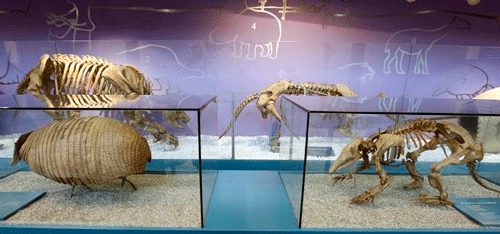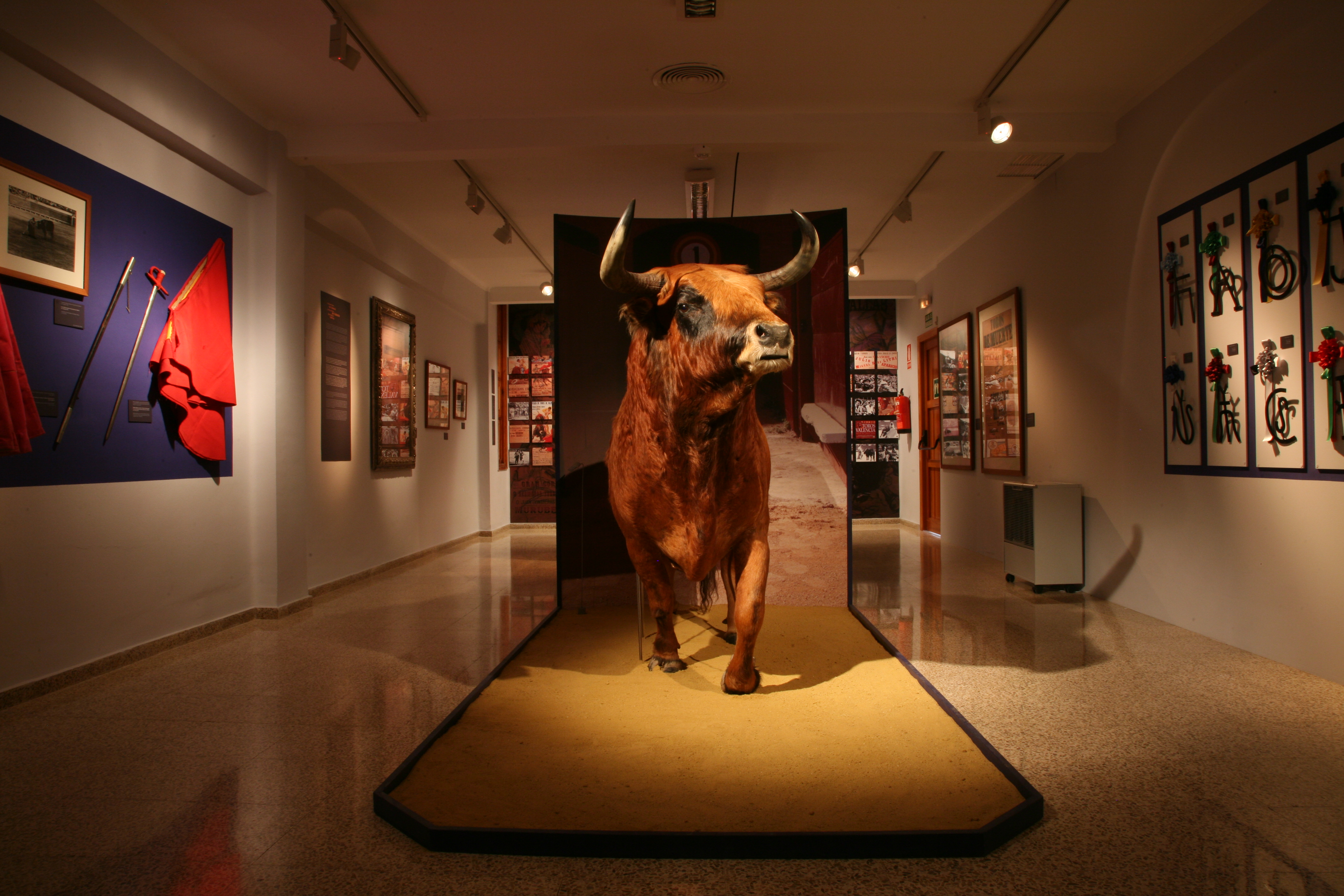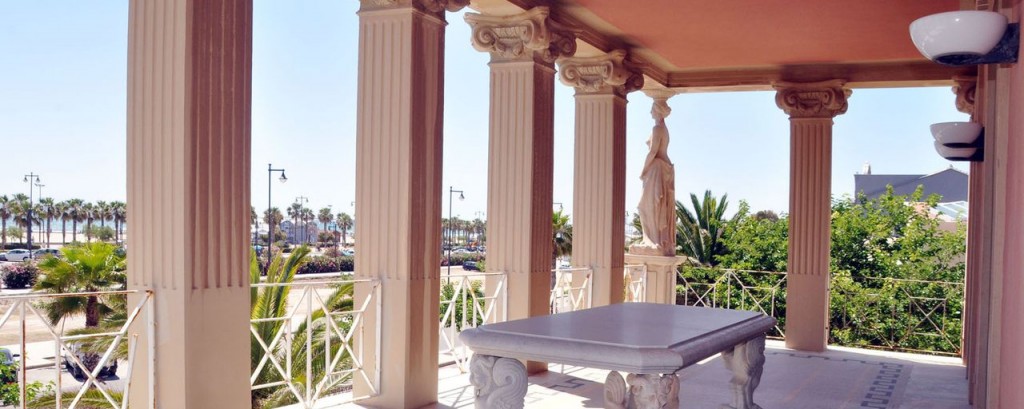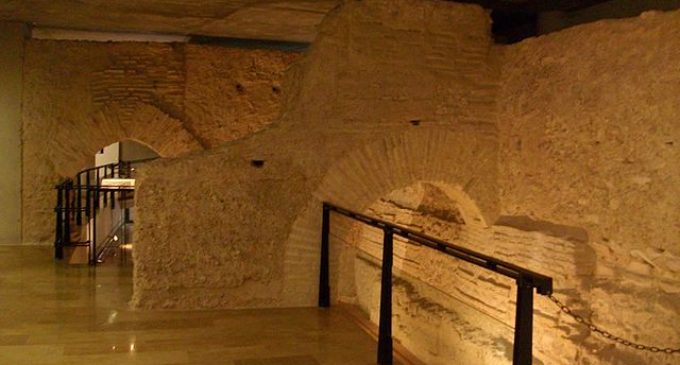+34 644 413 735 24/7 CUSTOMER SERVICE IN STAY
+34 644 413 735 24/7 CUSTOMER SERVICE IN STAY
In the city of Valencia we have important museums, we invite you to know a bit more about them in this post.
SCIENCE
City of Arts and Sciences. (Opening hours 10:00 am - 21:00 pm).
Science, nature and art in one of the largest scientific and cultural complexes in Europe, located in Valencia. The City of Arts and Sciences of Valencia is a unique set dedicated to scientific and cultural dissemination, which is composed of six major elements.
- L'Hemisfèric: With an eye shape. IMAX, planetarium and Laser cinema projection room. It has an approximate surface of 13,000 m².

- The Principe Felipe Science Museum (Opening hours 10:00 am - 21:00 pm): Similar to the skeleton of a dinosaur, is an interactive science museum. It has around 40,000 m², spread over three floors.

- L'Umbracle (Opening hours: 10:00 a.m. - 9:00 p.m.): Landscaped promenade with autochthonous vegetable species of the Valencian Community (rockrose, lentisca, rosemary, lavender, honeysuckle, bougainvillea, palm trees...) covered by floating arches from where you can see the entire complex of the City of Arts and Sciences. It houses the Paseo de las Esculturas, an outdoor art gallery with sculptures by contemporary authors. (Miquel Navarro, Francesc Abad, Yōko Ono among others).

- The Oceanographic (Opening hours10:00 am - 18:00 pm): It is the largest aquarium in Europe with 110,000 square meters and 42 million liters of water. Its cover in the form of a water lily, was designed by the architect Adrián Peláez Coronado, born in Valencia. The structural design of the roofs is by engineers Alberto Domingo and Carlos Lázaro.

- Palace of the Arts Reina Sofía (Opening hours 10:00 am - 21:00 pm): With four large rooms: a Main Hall, Magisterial Hall, Amphitheater and Chamber Theater.It is dedicated to music and the performing arts.

Along an axis of almost two kilometers, in the old bed of the Turia river, this complex promoted by the Generalitat Valenciana surprises for its architecture - by Santiago Calatrava and Felix Candela - and for its immense capacity to entertain and stimulate the minds of its visitors who, visiting their buildings, know different aspects related to science, technology, nature or art.
Municipal Museum of Natural Sciences (Opening hours10:00 am - 7:00 pm).
Located in the old Viveros restaurant, currently restored and adapted to its new use. It has among others, the Botet collection of fossils from South America (with the famous megaterio skeleton), an important collection of shells, fossils, etc. It combines temporary exhibitions with conference cycles.

Museum of Natural Sciences - P. Ignacio Sala S.J (Opening hours 10:00 am - 19:00 pm).
With more than 16,000 specimens among minerals, fossils, insects, crustaceans, mammals... It is specialised in European fauna.
Museum of the History of Medicine (Faculty of Medicine) (Opening hours10:00 am - 7:00 pm).
It houses the Library and the Historical-Medical Museum. The first has more than 30,000 volumes with copies of great rarity from the fifteenth to the nineteenth centuries. The museum combines interactive and permanent exhibitions.
The I.T Museum. Escola Tecnica Superior d'Enginyeria Informàtica (Opening hours 19:00 pm - 21:00 pm).
The funds raised by the permanent exhibition of the Information Technology Museum are distributed throughout the architectural space of building 1E of the Universitat Politècnica de València. In this exhibition you can see up close different artifacts of the last three decades of the twentieth century, such as a card punch, a ferrite memory, discs and large magnetic tapes, high performance workstations, home computers from the eighties, the first IBM PC computer, laptops of different sizes and video games.

ARTS AND CRAFTS
Bullfighting Museum. (Opening hours 10:00 am - 7:00 pm).
Founded in 1929, it is one of the most valuable and oldest in Spain, housing memories and bullfighting objects from the 18th, 19th and 20th centuries. It is conceived as a space for dissemination and a center for research and promotion of the world of bullfighting. Permanent exhibition: where are old costumes and elements related to Valencian bullfighting and relevant people. Realization of audiovisual projection passes "La Lidia". Library and Video Library. There are also temporary exhibitions of a biographical or cultural nature.

College of the Art of the Silk. (Opening hours 10:00 am - 7:00 pm).
Building built during the fifteenth century. The Gremi de Velluters (guild of silk workers) was established in 1492, an occupation that was then on the rise, thanks above all to the immigration of Genoese artisans who brought their novel techniques to Valencia. In 1686 the old Gremi of Velluters became, by a privilege of King Charles II, the College of the Greater Art of Silk, the most important corporation that unites small entrepreneurs in the sector. Its facade is from the 18th century. It was restored in 1939.
L'Íber- Museum of lead soldiers. (Opening hours 11:00 am - 2:00 pm / 4:00 pm - 7:00 pm).
Tour of the History of Spain and the World through dioramas made with lead soldiers.
Rice Museum. (Opening hours10:00 am - 2:00 pm / 3:00 pm - 9:00 pm).
The building is an old rice mill of the early 20th century. It has been recovered and restored along with its machinery.

Museum of the Artists Falleros Guild. (Opening hours10:00 am - 7:00 pm).
It is installed, since 1971, in the old convent of the mission house of San Vicente de Paül, which was finished in 1831, which is why it retains part of a structure of corridors and old cells. Subsequently had multiple uses, such as prison, barracks or warehouse. The Fallero Museum was restored and restructured in the early nineties of the twentieth century, being reopened in 1995. In 2016, the Fallero Museum was approved as the official Museum of the Valencian Autonomous Government, again being restructured in its museological and museographic approaches. One of the novelties of this restructuring was the start-up of the temporary exhibition hall "Josep Alarte", dedicated to anthological exhibitions of the work of Fallas artists.
Municipal Museum of the Trenet. (Opening hours 10:00 am - 7:00 pm).
It houses a museum installation on the history of the Metropolitan Railway of the city of Valencia and its metropolitan area. It has nine thematic units that explain from the beginning of the railway and the characteristics of the trips that it made and of the users of this means of transport, to technical data on the construction of the Trenet.

National Museum of Ceramics and Sumptuary Arts González Martí. (Opening hours 10:00 am - 7:00 pm).
Located in the Palace of Marqués de Dos Aguas, it is located between Poeta Querol (former Villarrasa and María de Molina), corner of Federico García Sanchiz (San Martín Abbey Street) and San Andrés Street in the city of Valencia (Spain). The space in which it is located is believed to have been probably the land destined for a Roman necropolis from the 1st to 3rd centuries AD. C., due to the findings in one of its courtyards in 1743.

BIOGRAPHY / HOUSE MUSEUM
House of Sant Vicent Ferrer. (Opening hours 9:00 a.m. - 1:30 p.m. / 4:30 p.m. - 8:00 p.m.).
Manor house of the Ferrer family, in which the saint lived. It was rebuilt in 1955. It is dedicated to the life and works of the Valencian priest San Vicente Ferrer, of the order of the Dominicans.

Concha Piquer House Museum. (Opening hours 10:00 am - 2:00 pm).
It is located in the house where the artist was born. On the ground floor there is the permanent exhibition with personal memories, graphic documentation, record material... There is also a recreation of his dressing room. Permanent audio-visual.

José Benlliure House Museum. (Opening hours 10:00 am - 2:00 pm / 3:00 pm - 7:00 pm).
Built in classic style in 1885, it was later acquired by José Benlliure, who added a Mediterranean garden with some elements of the demolished convent of San Francisco. The house recreates bourgeois life of the late nineteenth century, perfectly restored, maintaining the back garden and original workshops. You can admire paintings, sculptures, drawings and ceramic pieces made by José Benlliure, his brother Mariano and his son Peppino, as well as works by Sorolla, Muñoz Degrain and other artists.

Blasco Ibañez House Museum. (Opening hours 10:00 am - 7:00 pm).
This house was the old villa of Blasco Ibañez located on the beach of Malvarrosa, is dedicated to the famous writer and politician. It houses some of the components of his daily life; memories and personal objects among other things, as well as the first editions of all his books.

HISTORICAL FILES
Archive of the Kingdom of Valencia. (Opening hours 9:00 a.m. - 2:30 p.m.).
The Archive contains six centuries of the history of Valencia, first as a Kingdom and now as an autonomous community.

Municipal Historical Archive of the City of Valencia. (Opening hours 9:30 am - 2:00 pm / 3:00 pm - 7:00 pm).
Located in the Palace of the Count of Cervelló, It is composed of several rooms. In the first of them we can see the pictorial work of the main painters of the time such as the camera painter Vicente López, R. Orozco and J. Benlliure and likewise is collected in a permanent exhibition oil paintings, frescoes, steel engravings , medals or facsimiles of documents that rediscover some of the most significant moments in history. The Archive itself, in turn, consists of different series of documents and archives, all referring to the city of Valencia, being the majority prior to the last century.
MUSEUMS OF FINE ARTS
IVAM. Valencian Institute of Modern Art (Opening hours 11:00 am - 7:30 pm).
The Valencian Institute of Modern Art IVAM aims to the knowledge, tutelage, promotion and dissemination of modern and contemporary art. Its program of activities includes the exhibition of its artistic collections, the organization of temporary exhibitions and the publication of catalogs and other publications that deepen in the subjects treated in these samples, as well as the celebration of conferences, courses, workshops and concerts related to the organized exhibitions and with other fields of current art.
The IVAM Collection substantiates the heterogeneity of contemporary art with funds that travel through precise passages of the most representative currents of the 20th century, stopping at the sculptor Julio González.

Museum of Fine Arts of Valencia. (Opening hours 10:00 am - 20:00 pm).
The Museum of Fine Arts of Valencia is the second pinacoteca of Spain behind the Museo del Prado, being a clear reference in terms of ancient Valencian teachers. In 1913, the Museum was officially disengaged from the Royal Academy of Fine Arts of San Carlos, becoming since then an autonomous institution dependent on the State. The College of San Pío V, current headquarters of the Museum of Fine Arts of Valencia, was founded by Archbishop Juan Tomás de Rocabertí for the formation of priests. Designed by Juan Bautista Pérez Castiel in 1683, its execution was delayed well into the eighteenth century. It is composed of two parts: the school and the temple. Inside you can admire the rehabilitation of the Ambassador Vich's Courtyard, whose Carrera marble pieces had been guarded by the San Carlos Academy, after its demolition in 1859, and was rebuilt in this place in 2007.
The Museum of Fine Arts of Valencia is characterized by its great variety and by allowing a correct, wide and continuous reading of the movements and genres of painting from the 14th century to the beginning of the 20th century, housing works by painters as important as Juan de Juanes, Velázquez, Francisco de Goya or Joaquín Sorolla, and of styles as varied as Gothic, Renaissance, Baroque and Impressionism.

Museo del Patriarca. (Opening hours 11:00 am - 13:30 pm).
It was founded to offer the public access to a large part of the best works in its collection of paintings. The State archive is managed by the Royal Seminary College of Corpus Christi.
This Royal College, known among Valencians with the name of the Patriarch, had as its main task the formation of priests according to the spirit and the provisions of the Council of Trent. The exhibition houses valuable and unique heritage objects, paintings by artists such as Juan Sariñena, Francisco Ribalta, Gregorio Bausá or Luñis de Morales, books, documents, textiles and unique goldsmith's pieces.
The exhibition route allows the viewer to get closer to the history of the building, the social context, the religious climate of the Counter-Reformation and the personality and artistic patronage of the founder, the archbishop and patriarch Juan de Ribera.
Among the curiosities that surrounds the building is having served as a warehouse for many of the works of the Prado Museum during the Civil War, although traditionally only the Serranos Towers are cited as a refuge for the national artistic heritage at that time. One of the pieces with more value is a chest in which Tomás Moro kept the leaves of the manuscript he wrote in his captivity in the Tower of London, entitled "The Agony of Christ" and that after the execution of Moro, he went through the will of his daughter at Spanish hands and through the confessor of the Emperor Charles V, went to Valencia, home of Luis Vives, close friend of Moro.

Centre of Carmen. Museum of Fine Arts of Valencia. (Opening hours 11:00 am - 21:00 pm).
Located in what was Convent of Carmen. The oldest area is the chapel and the Gothic cloister, the nave of the church is from the first half of the 17th century, with a baroque facade and a bell tower. It has been in different times convent of Carmelitas (from S XIII), school of Fine Arts, Provincial Museum (until 1946). Space of temporary exhibitions.

Chirivella Soriano Foundation. (Opening hours 10:00 am - 2:00 pm / 5:00 pm - 8:00 pm).
The private Chirivella Soriano Foundation is located in the Joan de Valeriola Palace, in the district of Velluters. Its interior houses a splendid sample of gothic coffered ceiling of the XIV century, as well as other architectural elements of interest that were hidden and have come to light after a rigorous process of recovery, such as wooden beams, cut and painted with multiple polychrome motifs . The house-palace was the residence of some member of this potentate family, probably of the influential gentleman Joan de Valeriola, at least during the entire 15th century and until the beginning of the 16th century, probably giving name to the street in which it is located. Other buildings belonged to this family, such as that of Calle del Mar and the palace of Plaza de Nules. The foundation exhibits a remarkable private collection of contemporary Spanish painting.

MILITARY
Historical Military Museum. (Opening hours 10:00 am - 2:00 pm / 4:00 pm - 8:00 pm).
This Museum was inaugurated in 1995 by the then General Captain of the Military Region of Levante, D. Agustín Quesada Gómez. Being this museum managed by the Spanish Army. Museum that shows collections of models and dioramas, objects, weapons and testimonies related to the History of the Spanish Army ... Its funds, coming from the old Military Region "Levante", as well as from private collections, allow the knowledge of relevant facts in the Military History of Spain, in which the participation of the Army was decisive.

RELIGIOUS
Casa de las rocas. (Opening hours 9:30 am - 2:00 pm / 3:00 pm - 7:00 pm).
The construction of the Casa de las Rocas dates from the 15th century. It is next to the Portal dels Serrans, between wall and wall, that is, between the oldest and the most modern of 1356, ordered to be built by Pedro the Ceremonious, in order to serve as shelter for the cars and other tools that accompanied the Corpus procession.

Casa Museo Semana Santa Marinera. (Opening hours 10:00 am - 14:00 pm/ 14:30 pm - 20:30 pm).
It is a permanent museum that brings together a large part of the important artistic heritage of the Easter Week of Valencia. It also houses temporary exhibitions related to this festivity. The museum is located in an old rice mill, rehabilitated for that purpose.
Museum of the Cathedral of Valencia. (Opening hours 10:00 am - 6:30 pm).
It contains as important religious relics the arm of San Vicente Mártir, the Holy Chalice and the mummified bodies of the Patriarch and other bishops. In addition to all kinds of bones, clothing, writings, thorns, blood and other alleged remains of saints and martyrs, according to ecclesiastical sources, "are never shown to the public so as not to scandalize those who do not believe in it."
The Cathedral had an authentic store of relics deposited by kings, queens, popes, princes and prelates to give renown to the temple. However, nothing remains of its former splendor, because all the gold, silver and precious stones were stolen by the French in 1812. The reliquary also suffered continuous thefts.
There are two very different reliquaries, the Cathedral (which houses the oldest relics) and the Patriarch (whose relics bear a curious stamp of "authenticity").

ARCHAEOLOGICAL
Centro Cultural la Beneficencia. (Opening hours 10:00 am - 20:00 pm).
The building was built in 1876 in the former convent of the Crown. The institution was created under the old nineteenth-century liberal legislation, which gave city councils and councils the main role in the relief of indigence. Until 1982 he devoted himself to the education of children. In 1995 it became the La Beneficencia Cultural Center and underwent a profound remodeling - the second in its history, having been the first in 1944 - by architect Rafael Rivera. It currently houses the Museum of Prehistory of Valencia and the Valencian Museum of Ethnology.
Museum of Prehistory of Valencia. (Opening hours 10:00 am - 20:00 pm).
The Prehistoric Research Service of the Provincial Council of Valencia and its Museum of Prehistory were created in 1927, currently serving more than 80 years. In 1982, it was definitively located in the former Beneficencia and in 1995 the current Prehistory, Iberian Culture and Roman World rooms were opened to the public as well as the Library. On the ground floor of the museum are the temporary exhibition halls, the old church of Byzantine style decorated in 1881 and converted today into an assembly hall, the didactic workshops, the laboratories of restoration and quaternary fauna, the warehouses and other dependencies of the museum in addition to the store and the cafeteria.
The specialized library occupies a central place in the building. The permanent exhibition halls gather the main testimonies of prehistoric times, Iberian culture and Roman times in Valencian lands.
On the first floor there are the rooms dedicated to the Paleolithic, where the first fossil human remains of the Cova del Bolomor or the engraved platelets of the Cova del Parpalló stand out. In this first floor are also the rooms dedicated to the Neolithic, with the famous collection of vessels with cardial decoration of the Cova de l'Or de Beniarrés, and the Age of Metals.
On the second floor are exhibited the materials corresponding to the Iberian Culture, highlighting the famous collection of painted glasses with figurative decoration of Sant Miquel de Llíria or the written Iberian leads. Finally, the room dedicated to the Roman World exhibits some of the most important pieces of the Museum such as the mosaic of Font de Mussa or the Apollo of Pinedo.
To finish the very recent inauguration of the numismatics room "The History of money" that exhibits coins and bills along with objects related to the concept of money.

Valencian Museum of Ethnology. (Opening hours 10:00 am - 20:00 pm).
The Museum was created in 1982 and opened its doors to the public in 1983. Its objectives are research and dissemination in the field of Ethnology and Anthropology, making available to the public a dynamic space of knowledge and reflection on the cultural diversity that characterizes to humans in two complementary areas:
On the one hand, the Valencian proper, focusing on the cultural patterns of traditional Valencian society and its process of transition to industrialized society, without neglecting the new cultural forms of contemporaneity.
On the other hand, the general scope of cultures, from the Mediterranean, closer to us and that frame us directly, to those of more distant geographical areas.
L'Almoina. (Opening hours 10:00 am - 7:00 pm).
It is an archaeological museum of Spain inaugurated in 2007 that is located in the square of Tenth June Brut, in the city of Valencia.
The archaeological remains came to light in 1985, after the purchase of these lands by the Basilica of the city, in its expansion project of the religious building. Project that could not be carried out due, precisely, to the paralysis of the works at the moment when the first archaeological remains came out. After the purchase of this land by the City of Valencia, that same year began archaeological interventions, which would take place until 2005.
The Museum houses the remains taken during the excavations, both building remains and elements of material culture, belonging to several monumental buildings dating from different eras, inscriptions, loose architectural elements, more than a thousand coins and more than five hundred ceramic remains, among others.

EXHIBITION HALLS
The Almudín. (Opening hours 10:00 am - 2:30 pm / 3:00 pm - 7:00 pm).
The Almudín building in the city of Valencia is considered as an exhibition and museum center, and its management was carried out by the town hall. It was declared a national monument in 1969. The ensemble of the Almudín Museum is formed by a portico patio that is attached to the old "Pes de la Farina".

The Muvim. (Opening hours 10:00 am - 2:00 pm / 4:00 pm - 8:00 pm).
It serves as a link between illustration and modernity, based on ideas paying particular attention to the history of the media that serve as a transit between the eighteenth and the twenty-first century, incorporating photography, cinema and computers. Aspects such as photography, design, advertising, mobile image and art are key elements together with everyday life and the history of ideas.

Museum of History of Valencia. (Opening hours 10:00 am - 7:00 pm).
The History Museum of Valencia invites you to discover the past of the city from within, The permanent exhibition is dedicated to the history of Valencia, divided into eight periods or blocks. In each one of them there is exposed a collection of objects, documents and works of art representative of its time. In the center of each block there are two scenarios that recreate historical spaces of the city and in which, at the will of the visitor, are projected daily scenes that refer to the circumstances and the characters of each moment.

Bancaixa Cultural Center. (Opening hours 9:00 a.m. - 2:00 p.m. / 4:00 p.m. - 9:00 p.m.).
The Bancaja Cultural Center promotes and organizes actions to disseminate, promote and disseminate culture, with the aim of bringing the entire first-class cultural proposal to the whole society. The promotion of indigenous cultural expressions is also part of this commitment to culture.
Galeria Plaza del Tossal. (Opening hours 16:00 pm - 21:00 pm).
This museum is a small underground room located in the square Plaza Del Tossal, with remains of a tower and canvas of the Islamic wall of the 12th century that are part of the door of al-Hanax. It is used for temporary exhibitions.

Click on "discover" to see all the tours we have for you
Discover